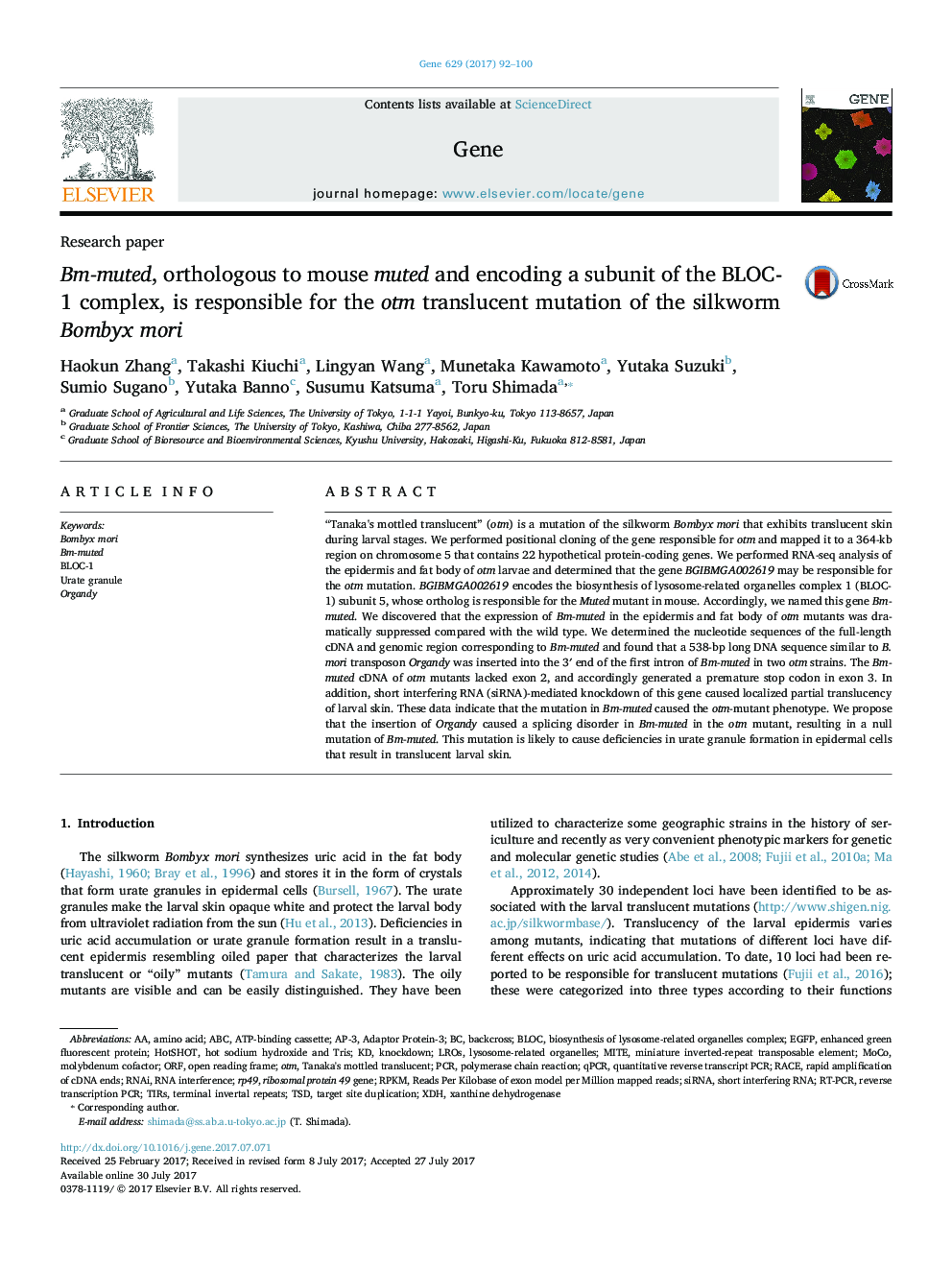| Article ID | Journal | Published Year | Pages | File Type |
|---|---|---|---|---|
| 5589217 | Gene | 2017 | 9 Pages |
â¢We identified Bm-muted as the gene responsible for Tanaka's mottled translucent (otm) mutationâ¢Bm-muted encodes a subunit of the Bombyx mori biogenesis of lysosome-related organelles complex 1 (BLOC-1)â¢Insertion of Bombyx transposon Organdy induced aberrant splicing and caused a null mutation in Bm-muted of the otm mutantâ¢Lysosome-related organelles (LROs) genes govern the accumulation of uric acid in silkworm larval epidermis
“Tanaka's mottled translucent” (otm) is a mutation of the silkworm Bombyx mori that exhibits translucent skin during larval stages. We performed positional cloning of the gene responsible for otm and mapped it to a 364-kb region on chromosome 5 that contains 22 hypothetical protein-coding genes. We performed RNA-seq analysis of the epidermis and fat body of otm larvae and determined that the gene BGIBMGA002619 may be responsible for the otm mutation. BGIBMGA002619 encodes the biosynthesis of lysosome-related organelles complex 1 (BLOC-1) subunit 5, whose ortholog is responsible for the Muted mutant in mouse. Accordingly, we named this gene Bm-muted. We discovered that the expression of Bm-muted in the epidermis and fat body of otm mutants was dramatically suppressed compared with the wild type. We determined the nucleotide sequences of the full-length cDNA and genomic region corresponding to Bm-muted and found that a 538-bp long DNA sequence similar to B. mori transposon Organdy was inserted into the 3â² end of the first intron of Bm-muted in two otm strains. The Bm-muted cDNA of otm mutants lacked exon 2, and accordingly generated a premature stop codon in exon 3. In addition, short interfering RNA (siRNA)-mediated knockdown of this gene caused localized partial translucency of larval skin. These data indicate that the mutation in Bm-muted caused the otm-mutant phenotype. We propose that the insertion of Organdy caused a splicing disorder in Bm-muted in the otm mutant, resulting in a null mutation of Bm-muted. This mutation is likely to cause deficiencies in urate granule formation in epidermal cells that result in translucent larval skin.
Graphical abstractDownload high-res image (109KB)Download full-size image
